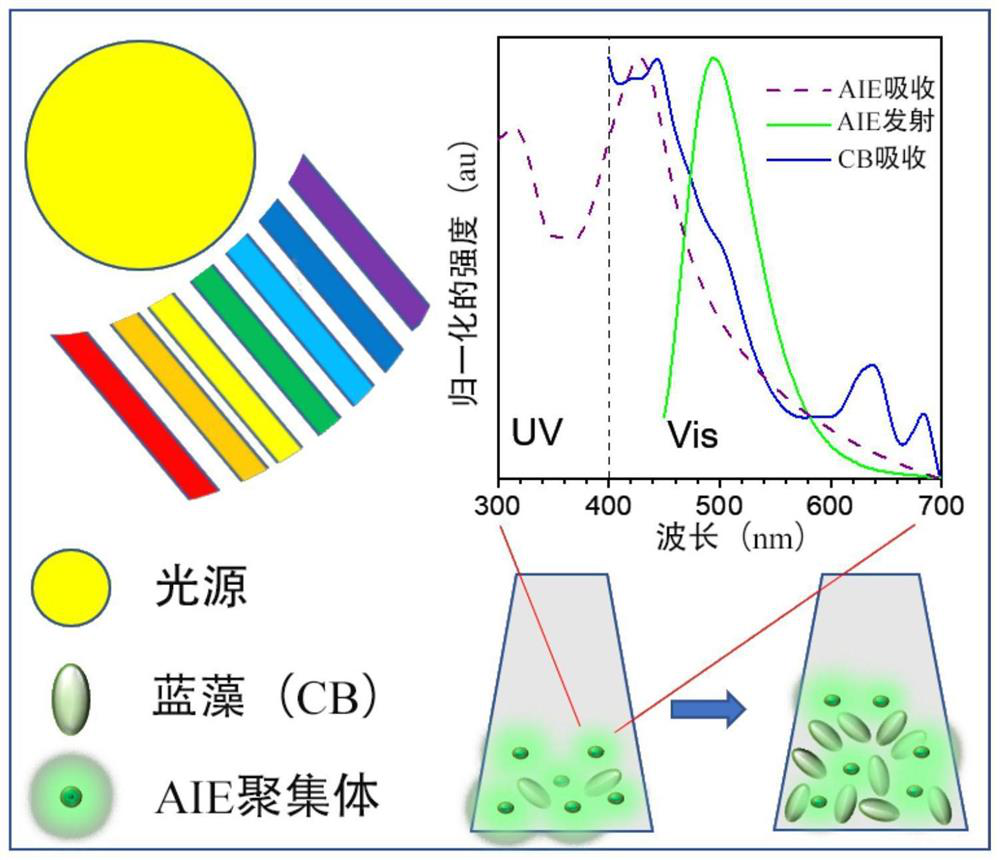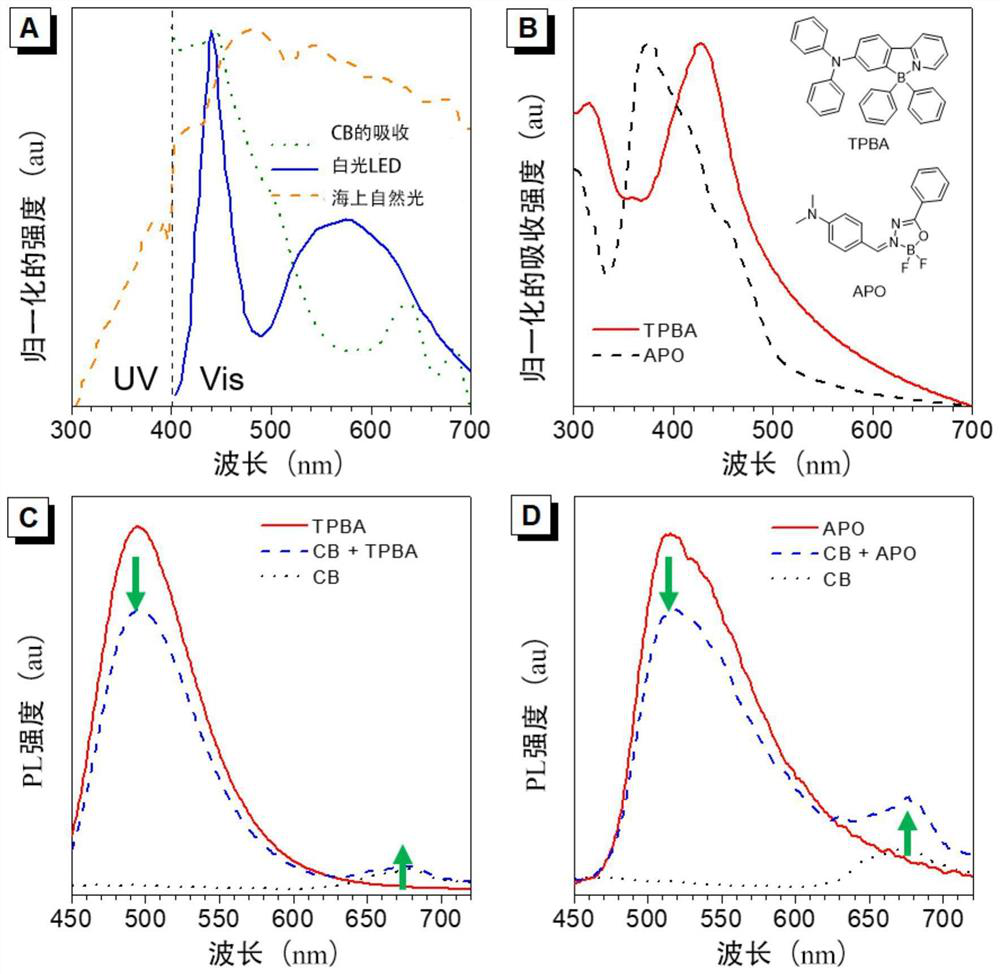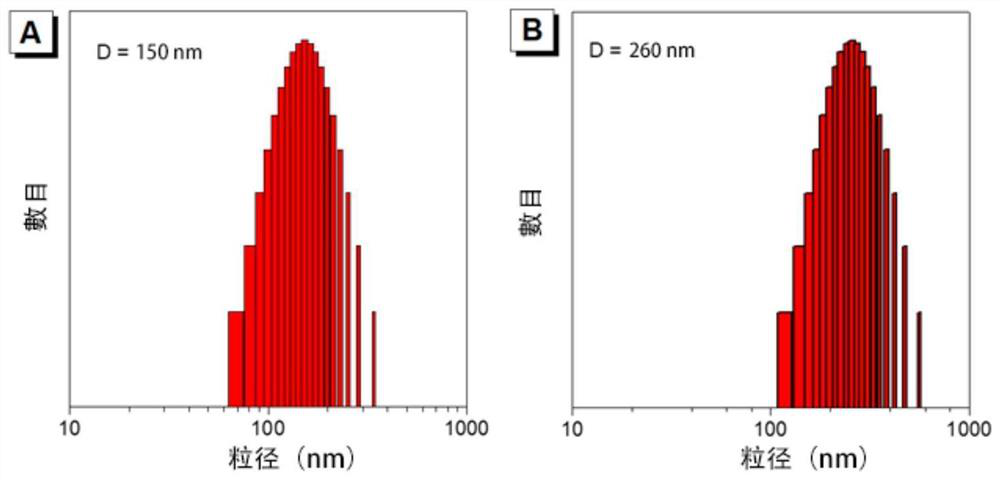Culture system and method for promoting growth of photosynthetic organisms
A technology of photosynthetic organisms and culture systems, applied in the cross field of chemistry and biology, can solve the problems of limited growth promotion of photosynthetic organisms, and achieve the effect of improving the utilization rate
- Summary
- Abstract
- Description
- Claims
- Application Information
AI Technical Summary
Problems solved by technology
Method used
Image
Examples
Embodiment 1
[0092] Embodiment 1: the synthesis of TPBA:
[0093]
[0094] Under the protection of nitrogen, add tetrakis (triphenylphosphine) palladium [Pd (PPh 3 ) 4 ] and potassium carbonate. After heating to reflux for 20 hours, the mixture was purified to afford TPAP as a white solid. The compound TPAP and N,N-diisopropyl-ethylamine were dissolved in dichloromethane, and then a solution of boron tribromide in dichloromethane was added dropwise on ice. Then, the mixture was stirred overnight at room temperature. The mixture was purified to afford compound TPAPBr as an orange solid. To a solution of the compound TPAPBr in toluene was added diphenylzinc under a nitrogen atmosphere. The mixture was then reacted with stirring at 70°C for 12 hours. Purification of the mixture gave pure TPBA as a yellow solid. 1 H NMR (400MHz, CDCl 3 ), δH=8.44(d, J=5.3Hz, 1H), 7.98-7.95(t, J=7.5Hz, 1H), 7.88(d, J=7.9Hz, 1H), 7.70(d, J=8.3Hz , 1H), 7.49 (s, 1H), 7.30-7.17 (m, 19H), 7.09-7.06 (t, ...
Embodiment 2
[0095] Embodiment 2: the synthesis of APO
[0096]
[0097] Benzohydrazide and 4-(dimethylamino)benzaldehyde were dissolved in methanol, and the resulting mixture was refluxed overnight. Suspend the above-mentioned hydrazone intermediate in 1,2-dichloroethane, and add allyltrimethylsilane and boron trifluoride etherate in sequence. The reaction flask was immersed in a boiling oil bath at 120.1 °C and stirred overnight. The crude product was purified to afford APO as a yellow solid. 1 HNMR(400MHz,THF-d8),d(ppm):8.45–8.43(m,2H),8.16(d,2H,J=7.2Hz),7.86(s,1H),7.59–7.55(m,1H) ,7.51–7.49(m,2H),6.89–6.87(m,2H),3.16(s,6H). 13 C NMR (100MHz, THF-d8), d (ppm): 170.65, 155.63, 151.25, 138.14, 133.58, 129.66, 129.41, 129.27, 128.47, 117.98, 112.88, 112.53, 40.54, 40.22. C 16 h 16 BF 2 N 3 O[M] + The theoretical value of HRMS (MALDI-TOF) is: 316.1354, and the measured value is: 316.1354.
Embodiment 3
[0098] Example 3: Spectral characterization of cyanobacteria and aggregation-induced luminescent molecules in seawater
[0099] In this example, cyanobacteria (CB) and aggregation-induced luminescent molecules APO and TPBA were characterized by spectroscopy, wherein the concentrations of APO and TPBA were 10 -5 M, the concentration of cyanobacteria is 10 6 individual / ml.
[0100] First, the absorption spectrum of cyanobacteria in the visible light range (400nm to 700nm) in seawater (containing 0.1% DMSO) was measured, and the results are as follows: figure 2 As shown in A, the absorption peaks of cyanobacteria are in the blue region of 450nm and the red region of 630nm, respectively, indicating that they have strong absorption in the blue, green and red regions, and weak absorption of light from 550nm to 610nm. In this case, for sunlight in tropical oceans with strong ultraviolet rays (300nm to 400nm), light in the ultraviolet band (300nm to 400nm) cannot be efficiently uti...
PUM
| Property | Measurement | Unit |
|---|---|---|
| size | aaaaa | aaaaa |
| wavelength | aaaaa | aaaaa |
| size | aaaaa | aaaaa |
Abstract
Description
Claims
Application Information
 Login to View More
Login to View More - R&D Engineer
- R&D Manager
- IP Professional
- Industry Leading Data Capabilities
- Powerful AI technology
- Patent DNA Extraction
Browse by: Latest US Patents, China's latest patents, Technical Efficacy Thesaurus, Application Domain, Technology Topic, Popular Technical Reports.
© 2024 PatSnap. All rights reserved.Legal|Privacy policy|Modern Slavery Act Transparency Statement|Sitemap|About US| Contact US: help@patsnap.com










